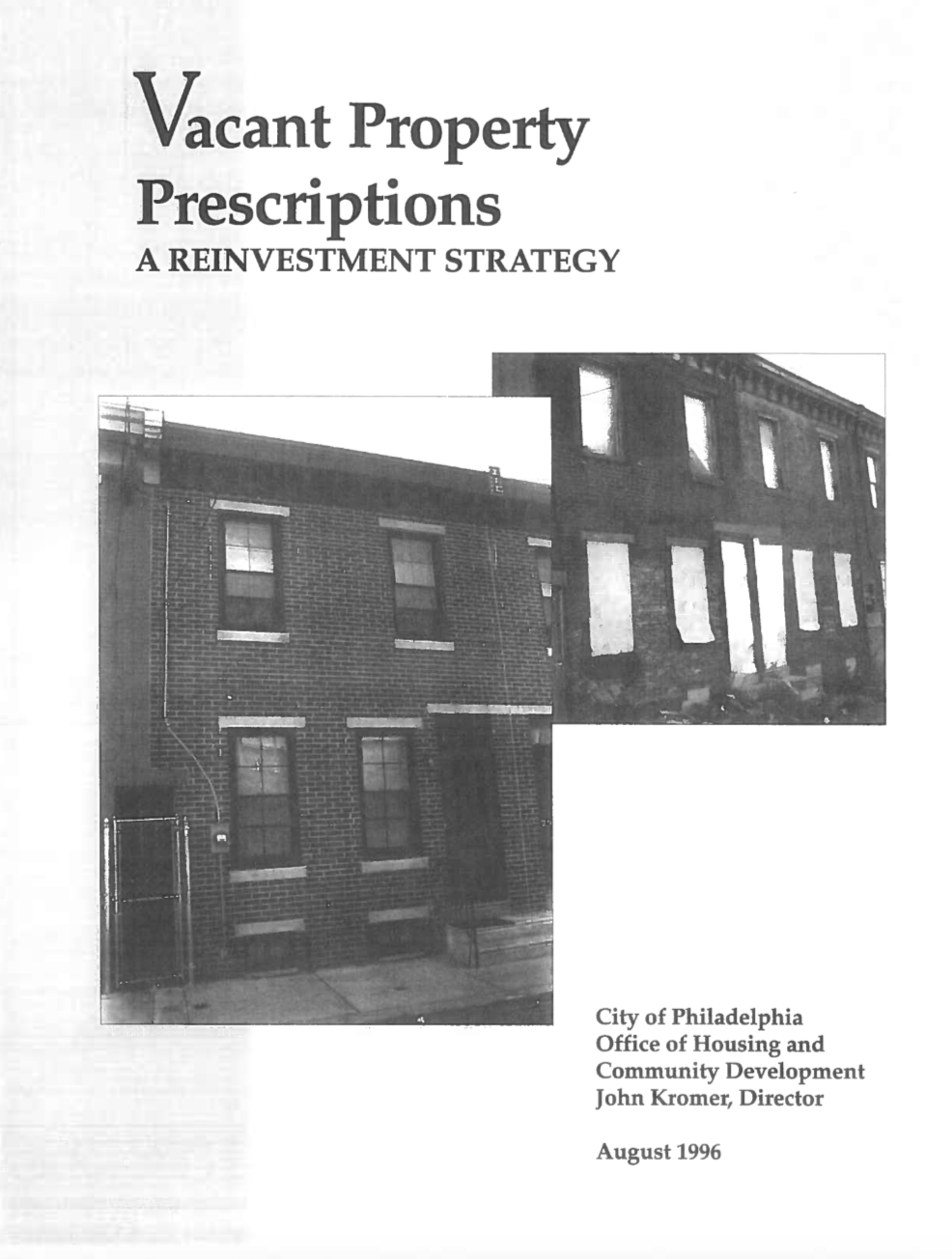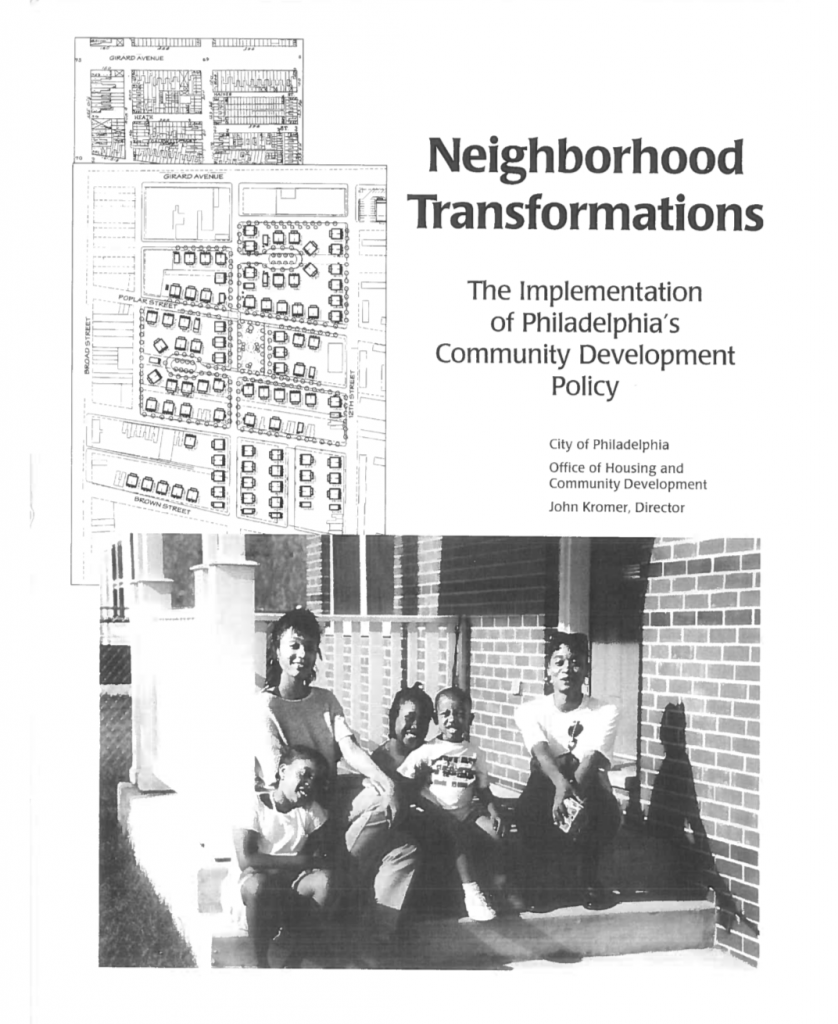With the support of Mayor Edward G. Rendell during my tenure as Philadelphia’s Director of Housing, I had an opportunity to introduce several new policy initiatives that were designed to make more effective use of available public-sector resources during the 1990s, when the city was just beginning to show signs of recovery from a half-century of population loss and economic disinvestment.
Home in North Philadelphia
(1993)
From the Introduction
“Although its neighborhoods have experienced much disinvestment and abandonment during past decades, this core area of North Philadelphia is an extraordinary resource that needs to be preserved and revitalized.
“This paper suggests that it is now possible to establish a coherent housing development strategy for Lower North Philadelphia–a strategy that could guide substantial improvement of the area as a whole.”
Vacant Property Prescriptions:
A Reinvestment Strategy
(1996)
From the Introduction
“Deteriorated vacant houses and unimproved vacant lots are the most visible evidence of the economic loss suffered by urban neighborhoods during recent decades of declining population and shrinking employment opportunity.
Because neither a resurgence of population or a massive infusion of public or private investment capital is a realistic prospect for Philadelphia neighborhoods, it is critically important that the city mobilize its limited resources effectively to address neighborhood vacant property problems and take advantage of current opportunities to promote reinvestment now.”
Neighborhood Transformations:
The Implementation of
Philadelphia's Community Development Policy
(1997)
From the Introduction
“The city’s program is oriented to two key economic development goals: Helping people move out of poverty into the middle class; and demonstrating to residents of the city and region that conditions in Philadelphia neighborhoods are beginning to improve and that the city’s neighborhoods are becoming more desirable, attractive living places.
“Years from now, the present time will be viewed as a period in which continued evidence of economic disinvestment in Philadelphia neighborhoods (brought on by the shrinkage of the city’s manufacturing economy) was accompanied by the first signs of recovery in the city’s residential communities. This publication describes a policy and associated implementation activities that, if sustained, can stimulate more positive changes and eventual long-term reinvestment in Philadelphia neighborhoods. “


